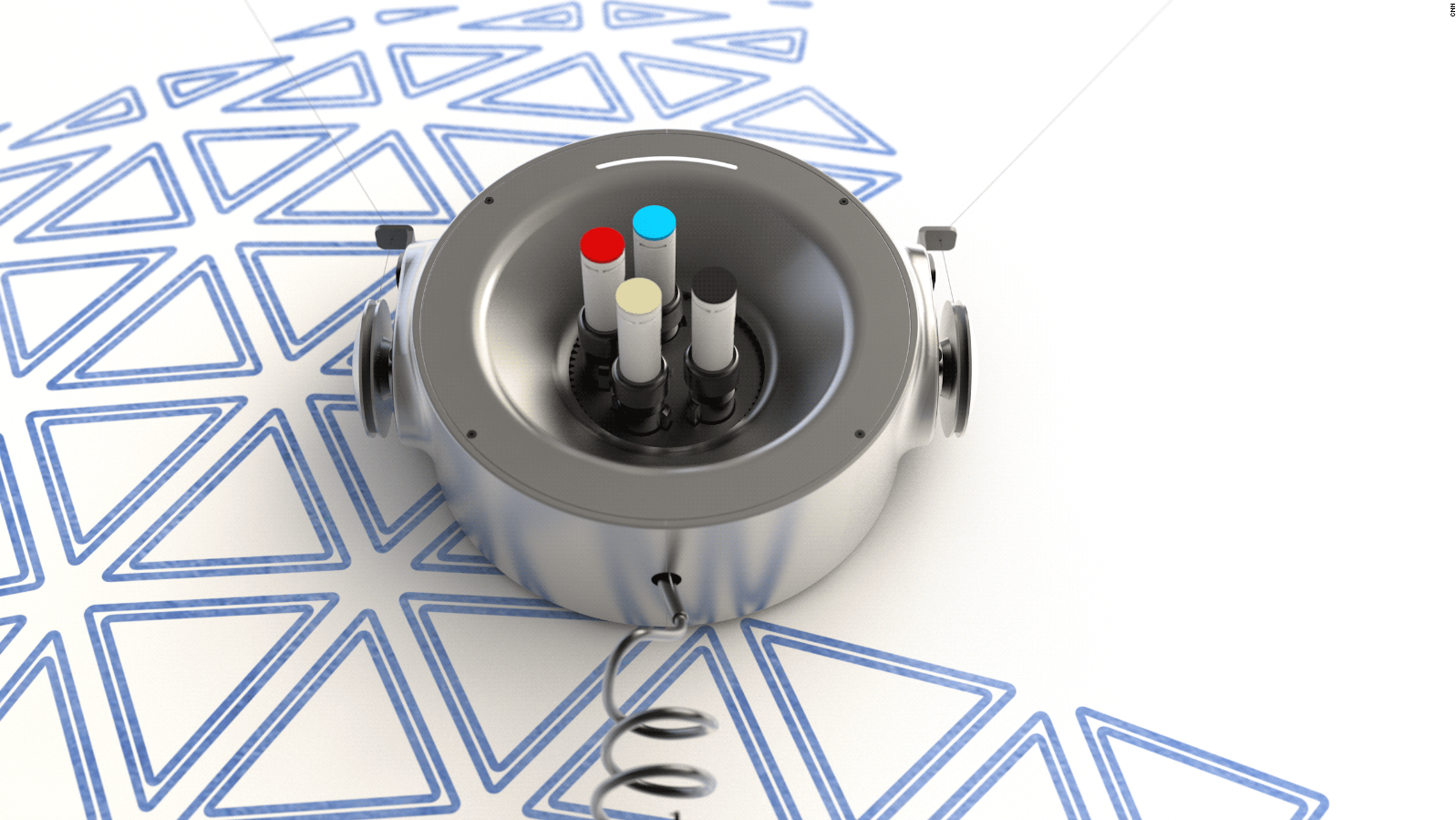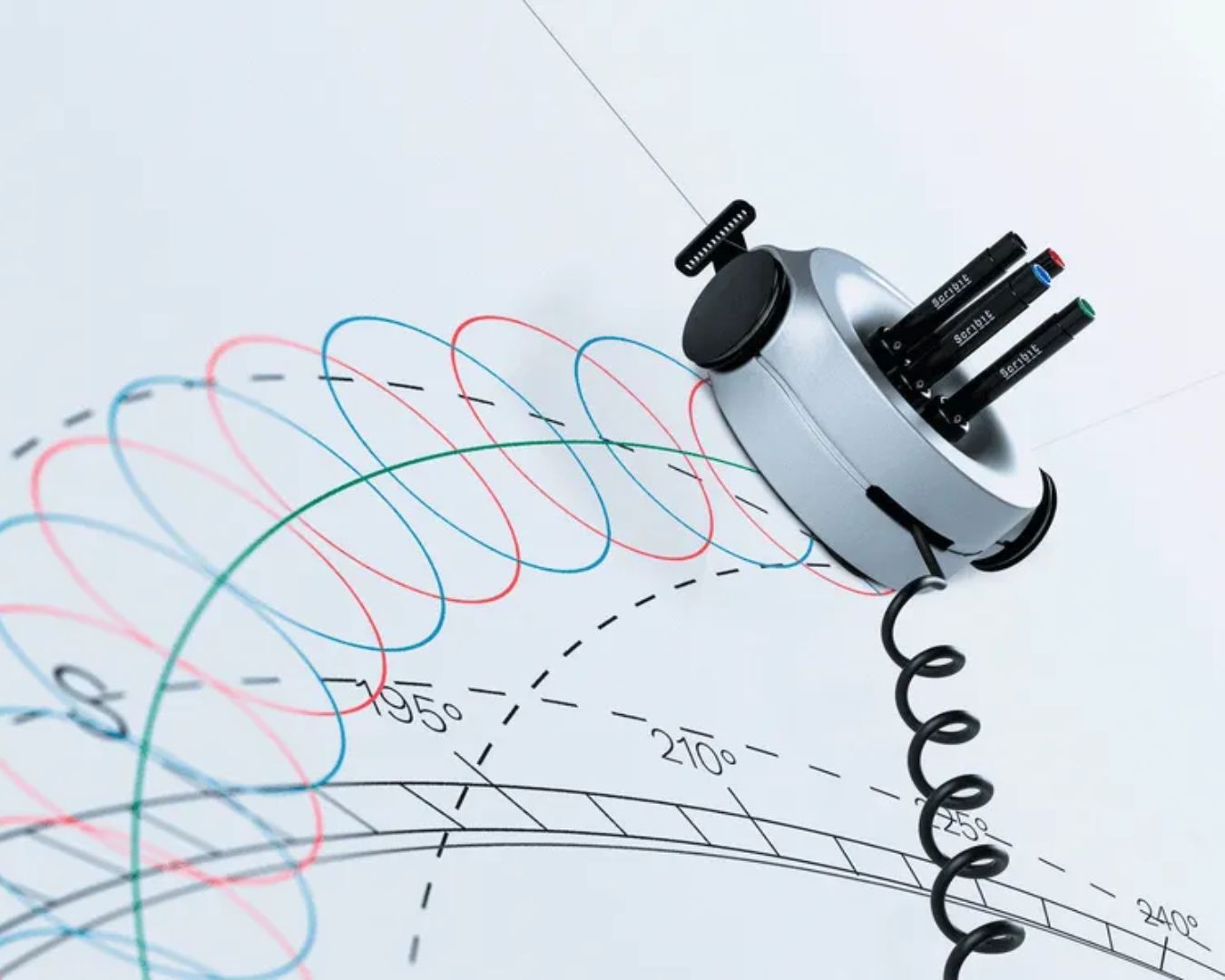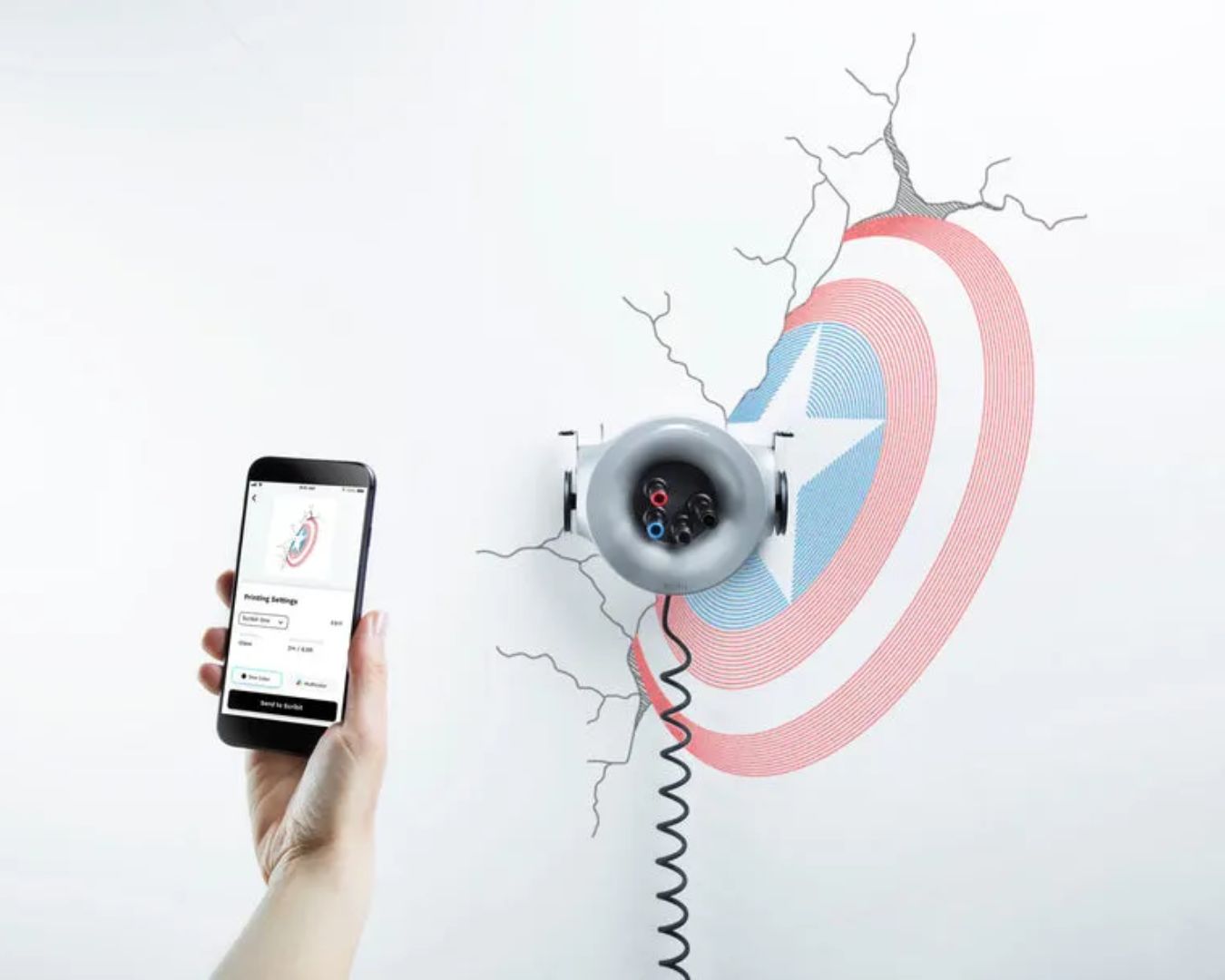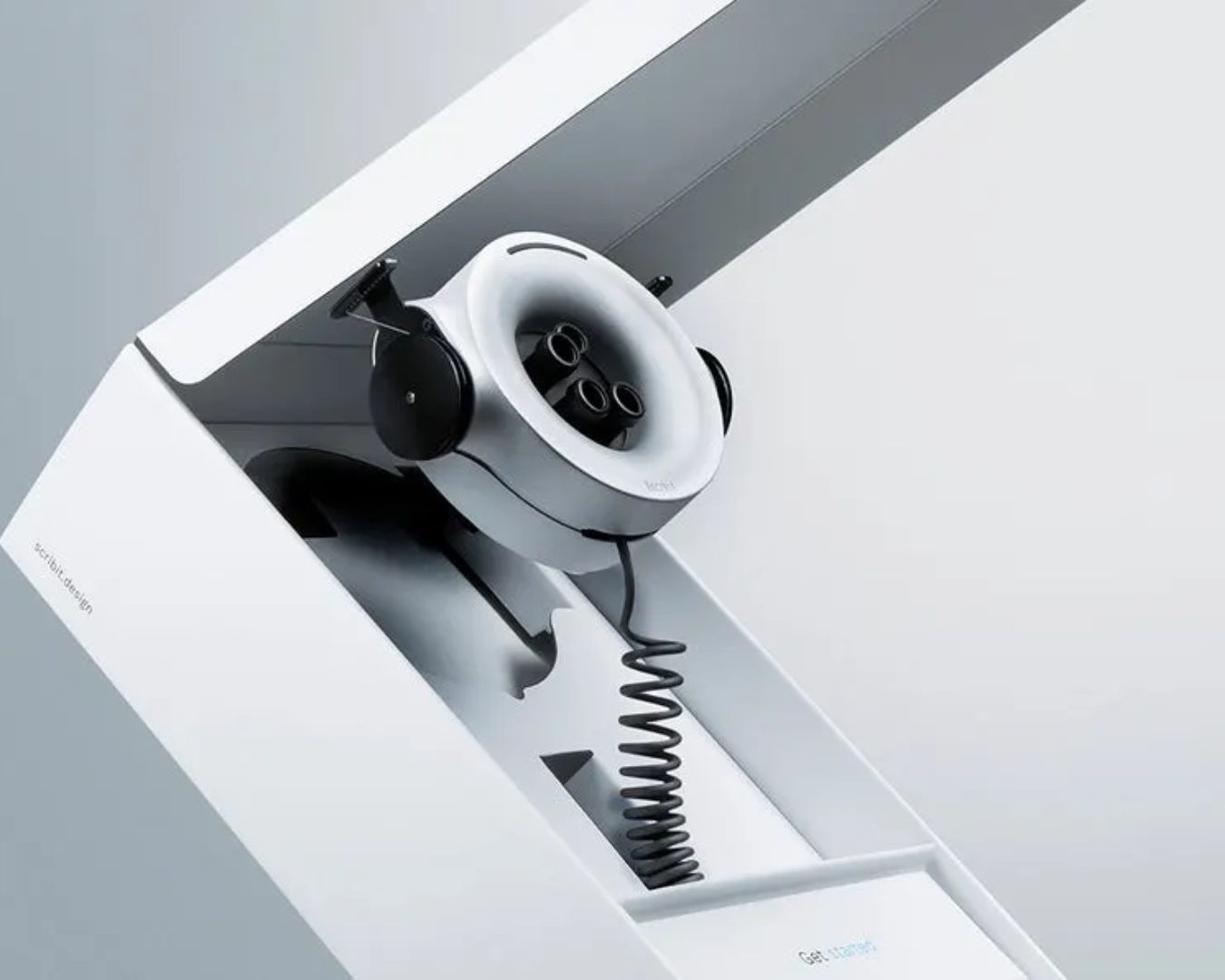

Imagine transforming the wall of your office or living room into a canvas for digital content, updating it in real time. This is not just a futuristic idea, but a reality thanks to Scribit , the innovative "writing robot" created by the MIT professor, Carlo Ratti . It revolutionizes the way we interact with our spaces, allowing us to draw images and texts on any vertical surface. From presenting the daily menu in a restaurant to projecting artistic masterpieces on your bedroom wall, Scribit opens up a range of possibilities for personal and professional expression.

Its ability to draw, erase, and redraw content endlessly gives us unprecedented freedom to redesign our spaces. With patented technology, this small device can operate with combinations of four colors and is supplied with an initial set of 24 colors. Its simplicity of installation and use democratizes access to design, allowing everyone from professionals to art enthusiasts to customize their environments like never before.
During Milan Design Week 2018, Scribit demonstrated its ability to captivate and entertain more than 20,000 attendees, standing out not only as a decoration tool but also as a means to enrich live events. This flexibility makes it an ideal solution for various contexts, from the home to professional and entertainment.

The concept of Scribit was born from Professor Carlo Ratti's vision to offer an alternative to the saturation of digital screens in our daily lives. By allowing us to draw on vertical surfaces, it reconnects us with the primordial act of artistic creation, evoking the simplicity and beauty of early cave graffiti. With the ability to adhere to almost any type of vertical surface and an installation that takes less than five minutes, Scribit represents the perfect fusion between artistic tradition and technological innovation.
Its evolution, from its first concepts in 2012 to its advanced state of development today, reflects the commitment of a multidisciplinary team of engineers, product designers and marketing experts. This team has worked tirelessly to make Scribit an accessible product for everyone, overcoming challenges such as unit cost, product robustness and software integration, always with the goal of delivering the first units by the end of 2018.

Scribit isn't just a robot; It is a paradigm shift in how we conceive and personalize the spaces in which we live and work. It offers a unique way to interact with digital content, from drawing inspiring artwork to receiving actionable updates like weather forecasts or shopping lists, all without looking at our mobile phones. With the promise of more integrations with AI apps and systems, it's ready to reconfigure our walls and, with them, the way we interact with space and technology.
This device, small but mighty, symbolizes an invitation to rethink our relationship with technology and art. It encourages us to imagine a world where every day we can rediscover our spaces, filling them with colour, life and creativity. It offers us the opportunity to take personalization to a whole new level, transforming common spaces into dynamic and personalized works of art that reflect our identity, our interests and our passions.
Have you ever wondered how Scribit can draw, delete, and then redraw new content on your wall infinite times? The key lies in a surprisingly simple yet effective proprietary technology. The secret lies in the device's ability to heat up to 149°F (65°C). This heat allows the ink in the markers to gradually evaporate, erasing previous drawings and leaving the surface ready for the next artwork or message. This process is not only innovative but also sustainable, as it reduces the need for disposable materials by allowing the same surface to be reused over and over again.

Imagine transforming the wall of your office or living room into a canvas for digital content, updating it in real time. This is not just a futuristic idea, but a reality thanks to Scribit , the innovative "writing robot" created by the MIT professor, Carlo Ratti . It revolutionizes the way we interact with our spaces, allowing us to draw images and texts on any vertical surface. From presenting the daily menu in a restaurant to projecting artistic masterpieces on your bedroom wall, Scribit opens up a range of possibilities for personal and professional expression.

Its ability to draw, erase, and redraw content endlessly gives us unprecedented freedom to redesign our spaces. With patented technology, this small device can operate with combinations of four colors and is supplied with an initial set of 24 colors. Its simplicity of installation and use democratizes access to design, allowing everyone from professionals to art enthusiasts to customize their environments like never before.
During Milan Design Week 2018, Scribit demonstrated its ability to captivate and entertain more than 20,000 attendees, standing out not only as a decoration tool but also as a means to enrich live events. This flexibility makes it an ideal solution for various contexts, from the home to professional and entertainment.

The concept of Scribit was born from Professor Carlo Ratti's vision to offer an alternative to the saturation of digital screens in our daily lives. By allowing us to draw on vertical surfaces, it reconnects us with the primordial act of artistic creation, evoking the simplicity and beauty of early cave graffiti. With the ability to adhere to almost any type of vertical surface and an installation that takes less than five minutes, Scribit represents the perfect fusion between artistic tradition and technological innovation.
Its evolution, from its first concepts in 2012 to its advanced state of development today, reflects the commitment of a multidisciplinary team of engineers, product designers and marketing experts. This team has worked tirelessly to make Scribit an accessible product for everyone, overcoming challenges such as unit cost, product robustness and software integration, always with the goal of delivering the first units by the end of 2018.

Scribit isn't just a robot; It is a paradigm shift in how we conceive and personalize the spaces in which we live and work. It offers a unique way to interact with digital content, from drawing inspiring artwork to receiving actionable updates like weather forecasts or shopping lists, all without looking at our mobile phones. With the promise of more integrations with AI apps and systems, it's ready to reconfigure our walls and, with them, the way we interact with space and technology.
This device, small but mighty, symbolizes an invitation to rethink our relationship with technology and art. It encourages us to imagine a world where every day we can rediscover our spaces, filling them with colour, life and creativity. It offers us the opportunity to take personalization to a whole new level, transforming common spaces into dynamic and personalized works of art that reflect our identity, our interests and our passions.
Have you ever wondered how Scribit can draw, delete, and then redraw new content on your wall infinite times? The key lies in a surprisingly simple yet effective proprietary technology. The secret lies in the device's ability to heat up to 149°F (65°C). This heat allows the ink in the markers to gradually evaporate, erasing previous drawings and leaving the surface ready for the next artwork or message. This process is not only innovative but also sustainable, as it reduces the need for disposable materials by allowing the same surface to be reused over and over again.
